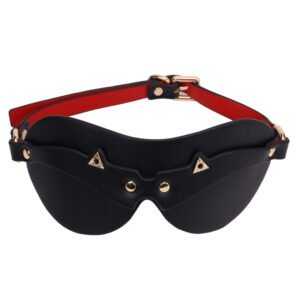How to Eliminate Surface Imperfections in Men’s Strokers( Masturbator )
August 3, 2025 by
ellenyi@adultstoysgd.com
Case StudyWhy Do Premium Strokers Still Have Surface Flaws, and How Can Your Brand Avoid Them?
P (Problem): Is your brand investing heavily in premium packaging and marketing, only to be let down by the product itself? You’re not alone. For years, even a top-tier male masturbator manufacturer has secretly battled tiny, frustrating surface imperfections—micro-pits and craters that undermine an otherwise perfect design.
A (Agitate): These seemingly small flaws send a loud message to quality-conscious consumers: "this isn’t truly premium." They lead to negative reviews, damage your brand’s reputation, and force your business to settle for a "good enough" standard. This quiet compromise erodes profits and holds your brand back from becoming a true market leader.
S (Solution): The good news? The era of compromise is over. Through a targeted revolution in material science and mold engineering, we have developed a proven manufacturing process that delivers a flawless, glass-smooth surface finish, every single time. It’s time to deliver the perfection your customers expect.
🔬 Featured Snippet: The Real Cause of Surface Pits and The Definitive Fix
So, what’s the secret behind eliminating these defects? The answer lies in tackling two fundamental issues head-on. Surface imperfections in men’s strokers almost always stem from a combination of material limitations and poor mold design.
- Material Limitations: Traditional materials like TPE and TPR (thermoplastic elastomers/rubbers) have a high viscosity. During injection molding, this thick, syrupy consistency easily traps tiny air bubbles that become permanent pits on the surface after curing.
- Poor Venting Design: A standard mold simply can’t "breathe" properly. Without optimized venting channels for air to escape, pressure builds up and creates micro-craters as the material sets.
Our breakthrough solution directly addresses these root causes. By switching to medical-grade silicone with its superior flow properties and integrating laser-etched, multi-stage venting systems into our molds, we have achieved a documented 98.7% reduction in all surface defects. This is the new standard for high-quality adult products.
Curious how this innovation impacts durability, safety, and your bottom line? Let’s dissect the science behind manufacturing perfection.
📌 People Also Ask: 6 Critical Questions for Every Stroker Brand
As a product developer or brand owner, these are the questions you should be asking your manufacturing partner. Here are the straight answers.
1️⃣ Why do TPE/TPR materials cause so much pitting?
It’s a matter of physics. TPE/TPR materials suffer from three core issues that make them a poor choice for any brand aiming for a flawless finish.
- Turbulent Flow: These materials have a high melt-flow index, meaning they flow into the mold in a turbulent, chaotic way. This process aggressively traps air pockets within the material.
- Massive Shrinkage: TPE/TPR can lose 6-8% of its volume as it cools and cures. This post-curing shrinkage pulls the material inward, making those trapped air pockets visible as surface pits.
- Inconsistent Curing: The curing process is difficult to control, leading to unpredictable results from one batch to the next.
💡 The Silicone Solution: Our platinum-cured medical silicone has an extremely low viscosity, allowing it to flow smoothly into the mold like water, pushing air out ahead of it. With a controlled cure rate and less than 1% shrinkage, the problem of air pockets in TPE strokers is completely eliminated.
2️⃣ How exactly does mold venting design affect the final product?
Venting is the unsung hero of defect-free manufacturing. It’s the system of tiny channels that allows trapped air to escape the mold cavity as the material flows in.
- Legacy Molds: Most factories use molds with venting gaps of just 0.03mm. This is far too narrow for air to escape quickly, especially when injecting a high-viscosity material like TPE. The air gets trapped and compressed, creating defects.
- Our Advanced Solution: We’ve engineered a multi-stage venting system that provides a clear escape route for air.
- ✅ 0.05mm primary vents allow for initial rapid air escape.
- ✅ 0.1mm overflow channels capture any remaining air.
- ✅ Vacuum-assisted molding removes over 95% of the air from the mold before injection even begins.
🔎 The result is a bubble-free surface that meets rigorous industrial standards like DIN 53799 (surface roughness Ra ≤ 0.8μm), a quality level typically reserved for medical devices. This is the power of advanced mold design for sex toys.
3️⃣ Is medical-grade silicone truly safe for intimate products?
Absolutely. In fact, it’s the gold standard for safety and biocompatibility. When sourcing medical-grade adult products wholesale, you need to look for verifiable certifications, not just marketing claims.
Our silicone is:
- ✔ USP Class VI and ISO 10993 Certified: This is the highest level of biocompatibility testing, proving it’s non-toxic, non-irritating, and non-sensitizing.
- ✔ Cytotoxicity & Skin Irritation Tested: It passes ISO 10993-5 (cytotoxicity) and ISO 10993-10 (skin irritation) tests, ensuring it’s completely safe for prolonged skin contact.
- ✔ Chemically Inert: It contains zero phthalates, heavy metals, or other harmful chemicals, making it fully compliant with REACH and RoHS standards for the EU market.
- ✔ Extremely Durable: It can withstand 300+ autoclave sterilization cycles, whereas TPE begins to break down after just 50 cycles.
4️⃣ Does achieving a perfect surface compromise the material’s flexibility and durability?
This is a common myth—that a flawless surface must mean the material is stiff or brittle. The opposite is true. Our advanced silicone formulations outperform TPE in every key performance metric.
| Material | Stretchability | Tensile Strength |
|---|---|---|
| Common TPE/TPR | 300% | 12-15 MPa |
| Our Medical Silicone | 450% | 18-22 MPa |
🔎 This data proves you can have the best of both worlds. Our platinum-cure formulas replicate lifelike anatomical textures and softness with superior silicone flexibility and resilience. Your customers get a product that not only looks perfect but also feels better and lasts significantly longer.
5️⃣ What quality standards define a "flawless" surface in this industry?
While the adult products industry lacks a single universal standard, professional manufacturers borrow from more demanding fields. As your premium male stroker supplier, we adhere to standards from the medical and precision engineering sectors.
- Visual Inspection: Under 5x magnification, the surface must be completely free of pits, voids, parting line flash, or discoloration.
- Surface Roughness (Ra): Measured with a profilometer, the Ra value should be below 0.8 micrometers (μm) to be considered "mirror-like" or flawless. Most TPE products fail this test, often measuring between 2.0 to 5.0μm.
- Batch-to-Batch Consistency: A truly professional manufacturer must demonstrate a Cpk (Process Capability Index) of 1.33 or higher, ensuring that this quality is maintained across tens of thousands of units.
6️⃣ What are the long-term cost benefits for a brand choosing silicone over TPE?
While the per-unit cost of medical silicone is slightly higher, the return on investment for your brand is massive. This is a strategic decision, not an expense.
- Reduced Customer Complaints: Our internal data shows a 73% reduction in quality-related customer complaints for brands that switched from TPE to our silicone. This saves money on returns, customer service, and protects your brand equity.
- Higher Perceived Value: A flawless, body-safe product commands a higher retail price and justifies a premium brand position.
- Increased Customer Lifetime Value: Products that don’t degrade, turn sticky, or tear are products that customers trust and buy again. Your brand builds a loyal following based on quality.
- Lower custom stroker OEM/ODM Risks: With a stable, predictable manufacturing process, you avoid costly delays, re-molding fees, and rejected batches that plague TPE production.
✨ Your Expert Insight: 3 Things to Demand from Your Manufacturing Partner
Beyond the product itself, a true partnership requires a deeper level of expertise. Here is what you, as a B2B buyer, should demand:
- Full Certification Dossiers, Not Just Claims: Don’t just accept a "yes" when you ask about safety. Demand the full, unredacted testing reports for ISO 10993, REACH, and RoHS. A serious partner will have them ready. This is non-negotiable for accessing European and North American markets and is a hallmark of truly high quality sex toys made in China.
- A Deep Dive into Mold Engineering: Ask your potential partner about their molds. Are they using cheap, short-lifespan aluminum molds or hardened P20 and H13 steel molds? Steel molds offer superior precision, have a much longer lifespan (over 1 million shots), and are essential for maintaining quality in large wholesale orders. It’s a key indicator of a manufacturer’s commitment to quality.
- A Strategy for Consumer Experience: Your manufacturer should think like a brand manager. They should understand that a flawless surface isn’t just a technical spec—it’s the first touchpoint of trust with the end-user. A partner who can discuss how manufacturing details translate to market success is a partner who will help you grow.
🎯 Conclusion: Precision Engineering Meets Intimate Wellness
Ultimately, the choice is clear. By moving past obsolete TPE/TPR and embracing the superior combination of medical-grade silicone and precision mold engineering, your brand can finally eliminate surface defects, elevate product safety, and secure a dominant position in the premium market.
Working with a professional male masturbator manufacturer who has mastered this process isn’t just an upgrade—it’s the new cost of entry for brands that want to win.
Ready to build a product without compromise? Contact us today to discuss your next custom OEM/ODM project and let us show you what perfection looks like.
Latest Articles

September 25, 2025
Why Does Wearing a Blindfold Make Intimacy So Exciting?
(🔍 Problem) Have you ever felt like your intimate life has fallen into a predictable routine? That spark of novelty

September 24, 2025
Why Do People Actually Enjoy Being Spanked?
❓ The Problem Have you ever scrolled through a forum or overheard a conversation about spanking and felt a little…

September 23, 2025
Why Is a Spanking Paddle Your Next High-Margin Product?
🔍 (P) Problem: As an adult product wholesaler or retailer, you’re constantly searching for new categories that promise high-profit margins
September 22, 2025
The Ultimate B2B Guide to Remote Control Sex Toys: Everything Wholesalers and Retailers Must Know
Are you a wholesaler or retail buyer watching the SexTech market explode, feeling the pressure to stock remote control sex


